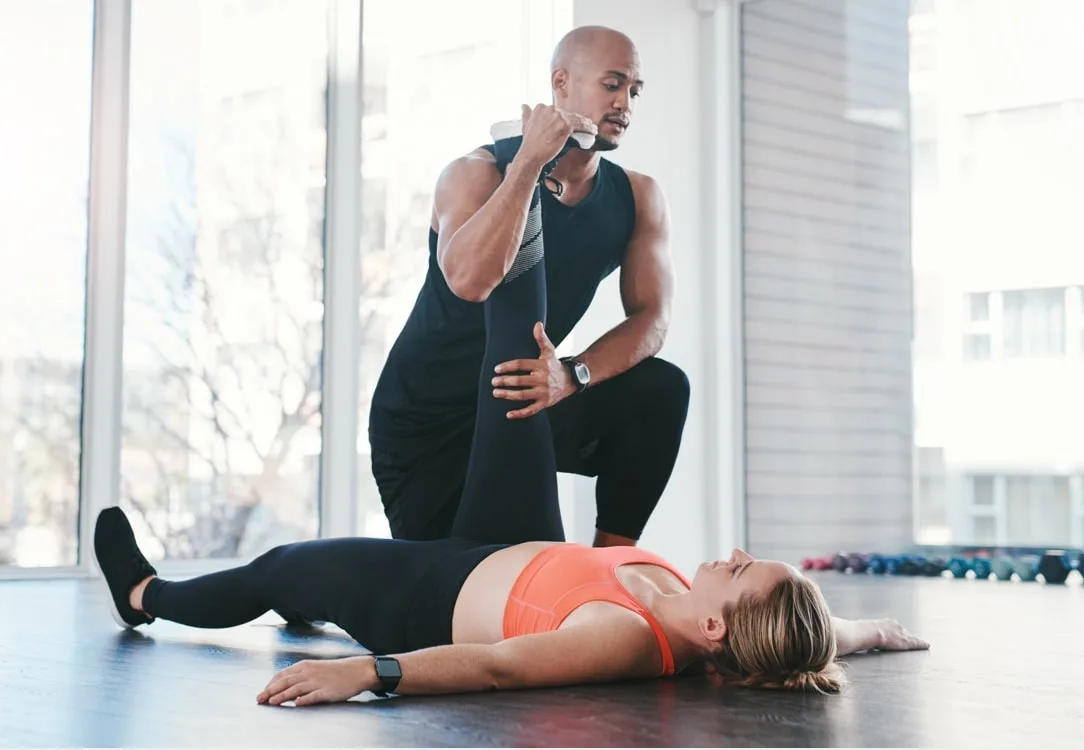Tight calves? You’re not alone. Whether you’re an athlete, weekend warrior, or just on your feet all day, calf stiffness is one of those issues that sneaks up on you — until it starts limiting your mobility or triggering nagging injuries like Achilles tendon pain or plantar fasciitis.
That’s why incorporating dynamic calf stretching into your warm-up routine is such a game-changer. Unlike static stretching, which holds a muscle in one position, dynamic stretches involve movement, mimicking the actions you’ll be doing in your workout or activity. And for the calf muscles, that mobility is crucial for everything from running and jumping to simply walking pain-free.
At Trustrength, we work with athletes and active individuals every day, helping them prevent and recover from lower-leg injuries. And a big part of that? Teaching proper, functional mobility — starting with a smart dynamic calf stretch.
Understanding the Calf: Why This Muscle Group Gets Tight
Your calf is made up of two main muscles:
- Gastrocnemius – the larger, visible muscle on the back of the leg
- Soleus – the deeper muscle that lies underneath
Together, they connect into the Achilles tendon, which attaches to the heel. These muscles are responsible for plantar flexion — pointing your toes, pushing off when walking or running, and stabilizing your ankle when standing.
When the calves are tight or overworked, it creates a chain reaction of problems:
- Limited ankle dorsiflexion (the ability to flex your foot up)
- Poor squatting or lunging mechanics
- Added stress on the knees, hips, and lower back
- Increased risk of Achilles tendinitis, shin splints, and plantar fasciitis
Which is exactly why we recommend starting every lower-body workout, run, or sport practice with dynamic calf mobility.
Common Causes of Calf Tightness
Here’s why your calves might feel like steel cables:
1. Overuse
Running, jumping, or walking on hard surfaces puts constant load on your calves, especially if you’re not giving them time to recover.
2. Inadequate Warm-Up
Jumping into high-impact movements with cold, tight muscles makes you more prone to tears, sprains, or tendon strain.
3. Poor Footwear
Shoes that lack support or have a high heel-to-toe drop can affect how your calves function day to day.
4. Limited Ankle Mobility
If your ankle joint lacks proper range of motion, your calves often compensate — and tighten up as a result.
5. Nerve-Related Conditions
In some cases, tightness might not just be muscular. Issues like sciatic nerve tension can mimic calf tightness. That’s where a professional assessment is key.
How to Know If You Need Dynamic Calf Stretching
If you’re dealing with any of the following, chances are your calves could use some dynamic mobility:
- Trouble getting low in a squat without your heels lifting
- Calf soreness after light activity
- Stiff ankles in the morning or after sitting
- Recurrent Achilles or plantar fasciitis issues
- Runners who feel like their stride is shortened
And if you’re in rehab or post-injury, a dynamic calf stretch can also be an excellent progression tool — getting your lower leg back into functional movement safely.
Dynamic vs. Static Calf Stretching
Here’s where people get confused.
Static stretching (like holding a wall stretch for 30 seconds) is great after your workout or for long-term flexibility.
But dynamic stretching gets the blood flowing, warms up the tissue, and preps the muscle to actually perform. Think of it as “priming the engine” — you wouldn’t go full throttle on a cold engine, right?
How to Perform a Dynamic Calf Stretch
Here are a few movement-based calf stretches we teach at Trustrength that are simple, effective, and scalable.
1. Dynamic Runner’s Calf Stretch
- Start in a staggered stance, one foot forward, one back
- Keep your back heel on the ground and shift your weight forward and back over your front foot
- Repeat for 15-20 controlled reps per side
- You should feel the stretch come and go dynamically, not just hold
2. Heel Raises with Rock-Backs
- Stand on a flat surface or small step
- Rise up onto your toes, pause briefly, then slowly rock back onto your heels
- This stretches and strengthens the calves in one fluid motion
3. Walking Calf Stretch (High-Knee March with Heel Drop)
- March in place or walk forward
- With each step, exaggerate a heel drop to stretch the calf while staying dynamic
- Great for runners and athletes pre-workout
All of these drills take under 5 minutes and can be done with zero equipment.
When to Use Dynamic Calf Stretching
Incorporate these stretches:
- Before running or sprinting
- Before leg day in the gym
- Before a sport practice or game
- As part of a rehab progression from calf, Achilles, or ankle injury
The key is to pair these stretches with light movement and activation — like jumping jacks or bodyweight squats — to fully prep the tissue.
Avoiding Injury: The Role of Dynamic Stretching in Performance
The calves play a critical role in shock absorption, force production, and stability. If they’re not firing well — or if they’re tight and under-prepared — you risk everything from decreased athletic performance to serious injury.
At Trustrength, we treat:
- Achilles tendinitis
- Calf strains
- Plantar fasciitis
- Ankle instability
- Shin splints
- And more
And time and time again, we find the root of the problem is poor warm-up mechanics and tight, overworked calves. Teaching patients how to incorporate dynamic calf mobility into their prep routine changes everything — from faster recovery to better movement patterns.
Prevention Tips from the Pros at Trustrength
Want to bulletproof your calves and ankles? Here’s what we recommend:
- Warm up dynamically every time — don’t skip it
- Train barefoot or in flat shoes occasionally to build foot/ankle strength
- Incorporate eccentric heel drops (slow calf raises) to build tendon durability
- Stay consistent — mobility gains come from repetition, not one-off efforts
- Listen to pain signals — if something feels off, get it checked
And of course, stay hydrated and fuel your body — muscle stiffness can also be related to basic recovery and nutrition.
Book with Trustrength for a Movement Assessment
If calf tightness is slowing you down, causing discomfort, or holding back your performance, don’t guess — get assessed. Our team at Trustrength can evaluate your movement, identify root causes, and build a program that helps you move better, feel stronger, and stay injury-free.We specialize in sports performance and injury prevention — and we’ll meet you where you’re at. Whether you’re rehabbing an old injury or prepping for your next race, we’ll help you get there. Call us today!



